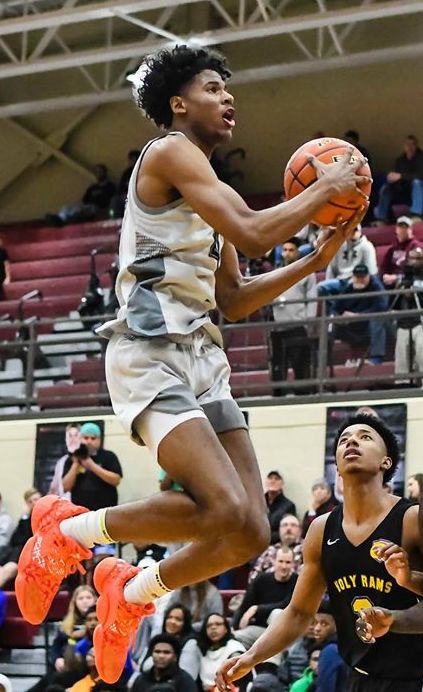Point-Counterpoint | The case for the G League
Jalen Green opted to forego the college route to play in the NBA’s G League.
May 19, 2020
Top high school basketball players, like five-star prospects Jalen Green, Isaiah Todd and Daishen Nix, shocked basketball fans this commitment season by foregoing the traditional college route to play in the NBA’s G League. It’s a smart move, especially for players with serious dreams of lengthy NBA careers.
With its new one-year development program, the G League has quickly become a top contender for the elite talent typically funneled through the NCAA. The G League promises players everything a young athlete needs to succeed — professional coaching, training with other prospects and seasoned players, a six-figure salary, living arrangements and a college scholarship for their post-playing days.
Even without all these benefits, college basketball is not the best fit for every NBA prospect.
This isn’t a new development. Many players go abroad to prepare for the next level. Most recently, potential 2020 lottery picks LaMelo Ball and RJ Hampton opted to play abroad in Australia’s NBL, rather than college.
When athletes go to college, they have to balance their focus between both academics and athletics, even if their main priority is athletics. The G League program can be thought of as a “trade school,” allowing players to focus their time and energy on learning and improving certain skills, basketball in this case.
And in the G League, those skills can be honed more effectively. This program allows players to improve in a much more challenging and rewarding way. Jalen Green and others won’t play against college-aged players in the G League. They will compete against older and experienced professional competition.
However difficult it is, competing at this more competitive level will help prove themselves ready for the NBA. Playing in the G League shows NBA scouts who is capable of handling the rigors of life in the professional league.
But above all else, a G League contract provides fair compensation for athletes with incredible value. Despite profiting billions from college basketball over the years, the NCAA strictly forbids college athletes from earning money or benefits due to their amateurism rules. The greed of the NCAA has cost them multiple five-star recruits during this commitment season alone.
Not only does the G League allow prospects to earn a six-figure salary out of high school, it gives further financial incentives that allow players to earn money in impactful ways, such as through attending life skills programs and community events.
And, yes, players in this program are allowed to pursue marketing deals from sneaker companies. Although it hasn’t been decided which company he will sign with, Jalen Green is expected to make seven figures from his shoe deal. Money isn’t everything, but it sure helps a lot.
The NCAA has already missed out on some of the country’s best high school players, and they only stand to lose more as the G League becomes more ubiquitous. If they want to compete, they need to modernize.
This column is part of a point-counterpoint series. To read the counterpoint, click here.








